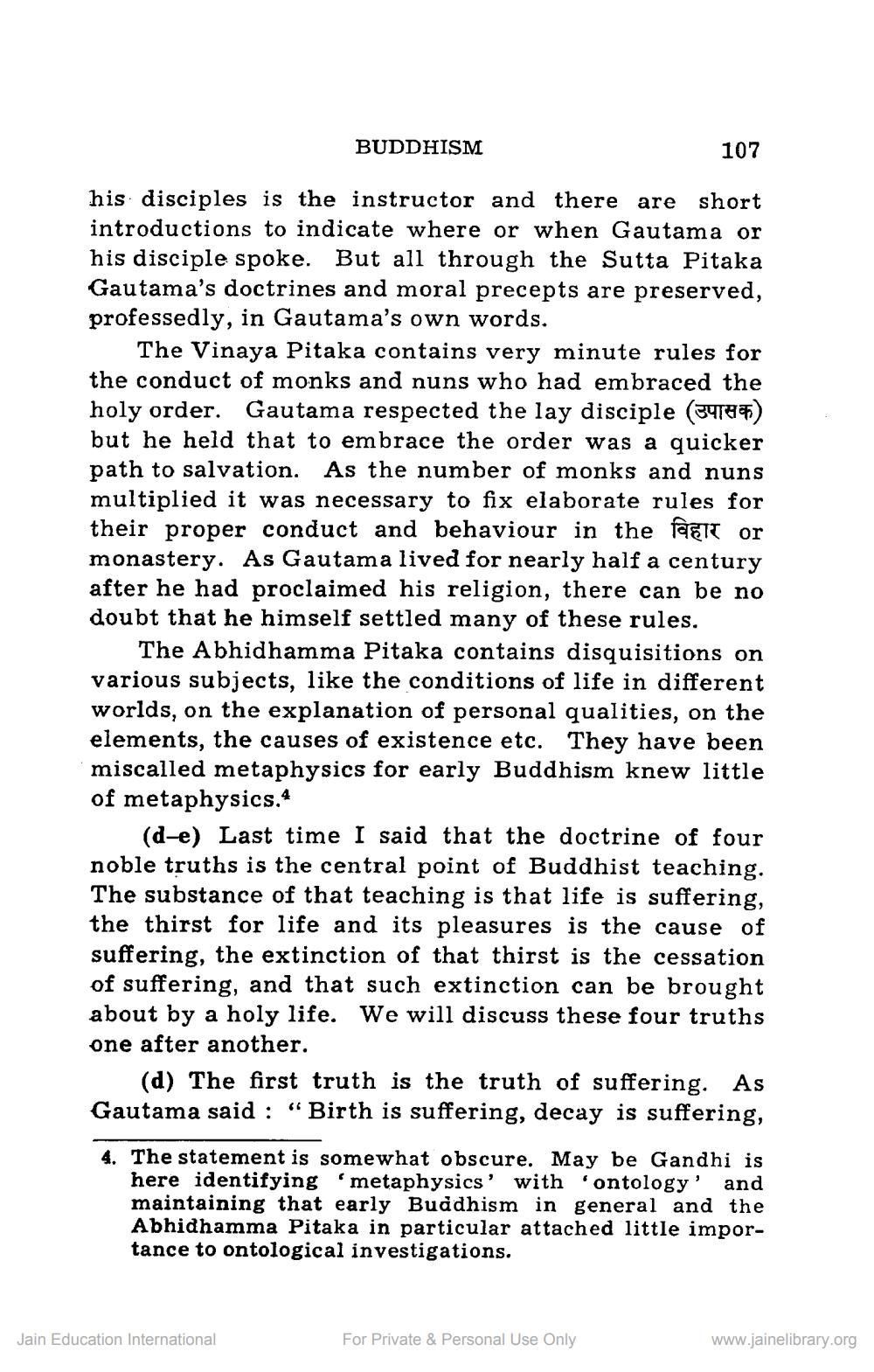________________
BUDDHISM
107
his disciples is the instructor and there are short introductions to indicate where or when Gautama or his disciple spoke. But all through the Sutta Pitaka Gautama's doctrines and moral precepts are preserved, professedly, in Gautama's own words.
The Vinaya Pitaka contains very minute rules for the conduct of monks and nuns who had embraced the holy order. Gautama respected the lay disciple (348) but he held that to embrace the order was a quicker path to salvation. As the number of monks and nuns multiplied it was necessary to fix elaborate rules for their proper conduct and behaviour in the FETT or monastery. As Gautama lived for nearly half a century after he had proclaimed his religion, there can be no doubt that he himself settled many of these rules.
The Abhidhamma Pitaka contains disquisitions on various subjects, like the conditions of life in different worlds, on the explanation of personal qualities, on the elements, the causes of existence etc. They have been miscalled metaphysics for early Buddhism knew little of metaphysics.
(d-e) Last time I said that the doctrine of four noble truths is the central point of Buddhist teaching. The substance of that teaching is that life is suffering, the thirst for life and its pleasures is the cause of suffering, the extinction of that thirst is the cessation of suffering, and that such extinction can be brought about by a holy life. We will discuss these four truths one after another.
(d) The first truth is the truth of suffering. As Gautama said : “Birth is suffering, decay is suffering,
4. The statement is somewhat obscure. May be Gandhi is
here identifying metaphysics' with ontology' and maintaining that early Buddhism in general and the Abhidhamma Pitaka in particular attached little importance to ontological investigations.
Jain Education International
For Private & Personal Use Only
www.jainelibrary.org




